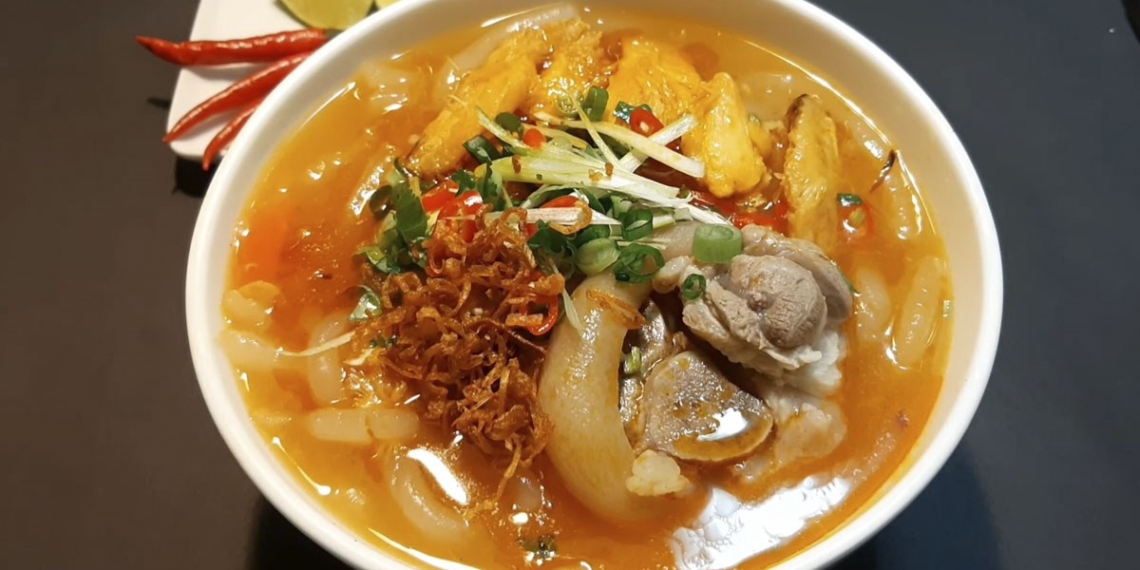-
Preparation
15 minutes
-
Cooking
30 minutes
-
Difficulty
Medium
Ingredients for Crab and Pork Leg Noodle Soup For 4 people
Noodle soup 600 gr Sea crab 2 pieces Pork leg 500 gr Carrot 1 piece Dried shrimp 50 gr Green onion 4 stalks Cilantro 4 stalks Shallot 3 pieces Onion 1 piece Pork bone broth 2 liters Annatto oil 2 teaspoons Chili pepper a little Fish sauce 4.5 tablespoons Tapioca flour 1 tablespoon Chopped onion/garlic 1 tablespoon Cooking oil 4 tablespoons Fried shallots a little Common spices a little (sugar/salt/seasoning)
Implementation Tools
How to Choose Fresh Ingredients
How to choose fresh and delicious crabs without being spoiled
- Observe the silk skin between the joints of the crab’s claws; if the silk skin has a light or dark pink color, the crab will have more meat and will be tastier when cooked.
- Additionally, choose crabs with shiny claws as they are fat, while skinny crabs will have wrinkled claws.
- Gently squeeze the crab’s belly; a good crab will have a firm and certain hardness in its belly.
- Do not buy crabs that are less active or sluggish; these are crabs that are about to die, and their meat will not be firm or sweet.
- For this dish, you can buy live crabs to boil and extract the meat, or you can buy pre-peeled crab meat depending on your preference!
See details: How to choose fresh crabs
How to choose fresh and delicious pork trotters
- The best pork trotters are the front trotters because the front legs are more active, resulting in thinner, softer, sweeter meat with more tendons, making them more tender, flavorful, and delicious when cooked.
- Good pork trotters will have a bright pink color, without any foul smell. When pressed, they should have good elasticity and not sink in. The hooves should be intact and not come off.
- Avoid buying trotters that are waterlogged and have yellow liquid oozing out when cut. The meat may have round white spots like rice grains. This is a sign that the pig has been fed with lean meat additives and has a rice worm disease.
How to choose chewy and delicious bánh canh noodles without chemicals
- Clean bánh canh noodles without chemicals will have a natural aroma of rice and corn flour. In contrast, chemically treated noodles will have a stronger and less pleasant smell.
- Good bánh canh noodles typically have a translucent white color, are soft and chewy, with a certain degree of elasticity.
- Avoid choosing noodles with strange colors and smells, or those that are moldy.
- It is advisable to buy bánh canh from reputable producers or at large supermarkets and grocery stores.
- Additionally, to ensure safety and hygiene, you can also make bánh canh noodles at home.
See details: How to make simple bánh canh noodles at home
Where to buy pork bone broth
- For convenience, you can buy canned or boxed pork bone broth at food stores, e-commerce sites, etc. When purchasing, remember to check the can or box carefully, along with the production date and expiration date.
- Additionally, you can also cook pork bone broth at home to ensure quality.
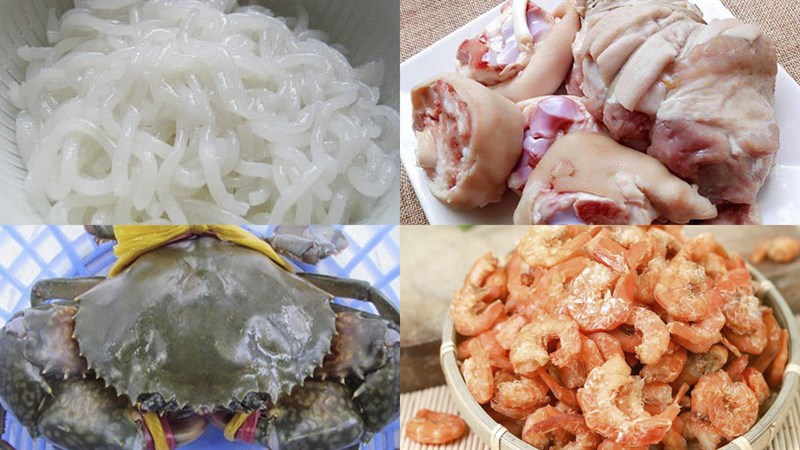
How to prepare Crab Cake with Pork Leg
-
Prepare the pork leg
Soak the pork leg in warm water mixed with 2 tablespoons of salt, while soaking, use a knife to scrape off the hair and dirt around the pork skin. Rinse the pork leg thoroughly with water several times and then let it drain.
Place a pot of water on the stove, add 1 teaspoon of salt and bring to a boil, then add the pork leg and blanch for about 1 minute, then remove and rinse briefly with water.
How to clean the pork leg, no fishy smell
- Method 1: Use a torch, burn with medium heat until all the fine hairs are burned off, then rinse with clean water.
- Method 2: Use vinegar (lemon, white wine) to rub on the pork, then rinse with water.
- Method 3: Blanch the pork leg in boiling water for about 2-3 minutes, then rinse with cold water.
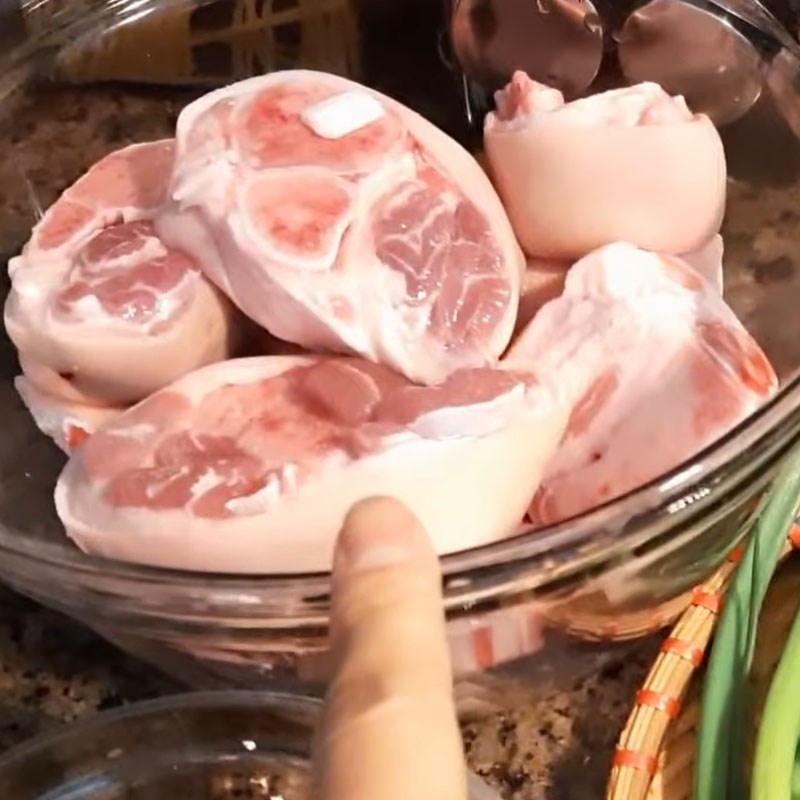
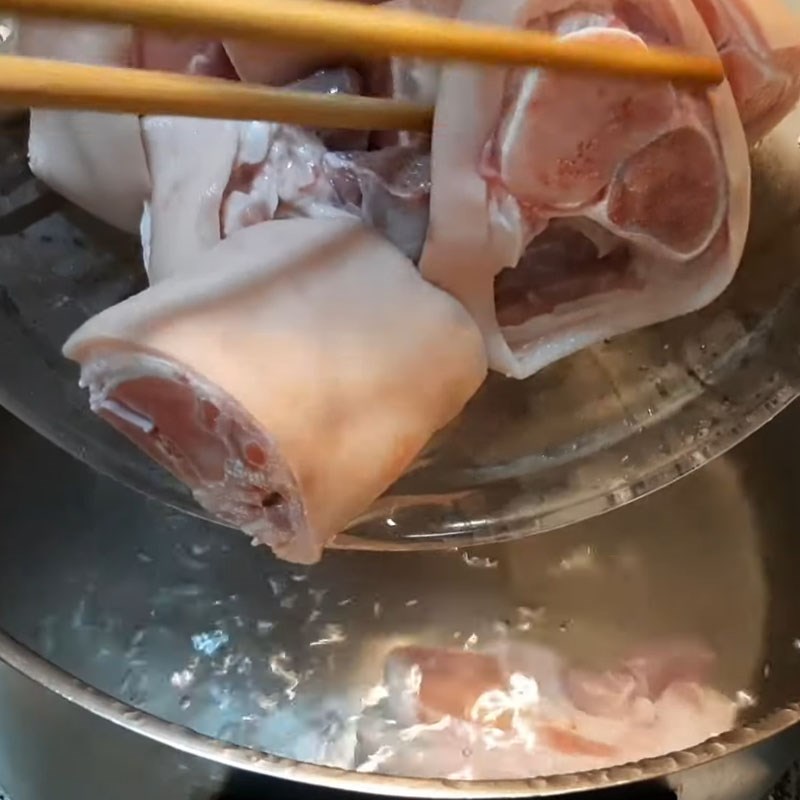
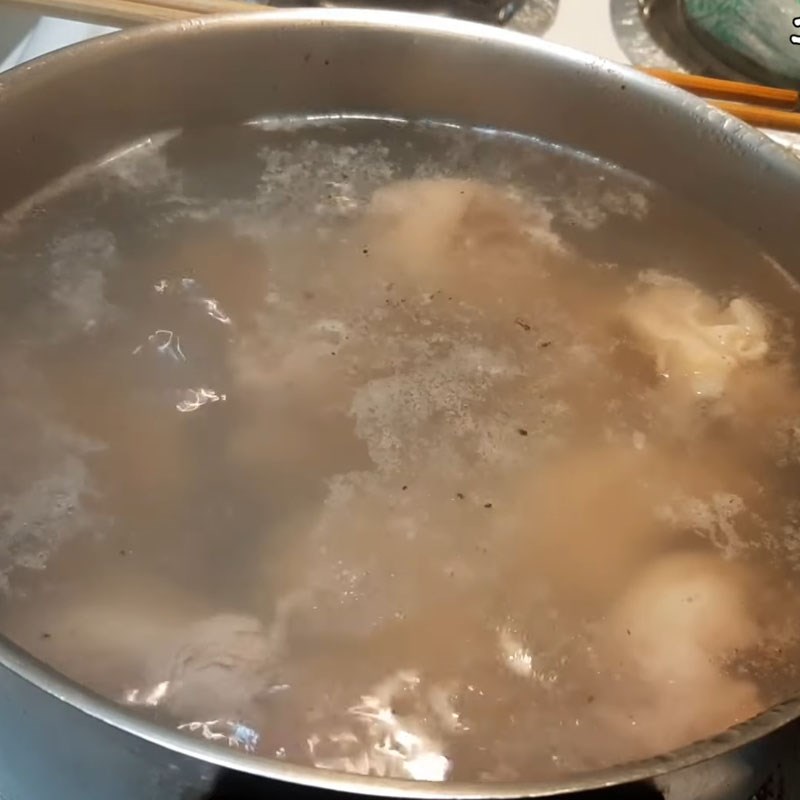
-
Prepare other ingredients
Dried shrimp should be soaked in water for about 15-20 minutes to soften, then drain. Put the dried shrimp into a mortar or blender to grind into a fine paste.
How to soak dried shrimp quickly, clean sand
- To remove dirt on the surface of the dried shrimp, you should rinse them briefly with water before soaking.
- Soaking dried shrimp in warm water for about 15 minutes will help them soften faster.
For live crab, to anesthetize the crab, after purchasing, put it in ice water for about 10 minutes, then use a brush to scrub off dirt, and rinse the crab several times with water.
Boil a pot of water on the stove, add the crab to cook until done, remove and let cool, then separate the meat.
Peel the onion, wash it clean. Peel the carrot, wash it clean, then cut it into bite-sized pieces about 1/2 the thickness of a small finger.
Wash the green onion and cilantro, then chop them finely. Chop the chili pepper finely.
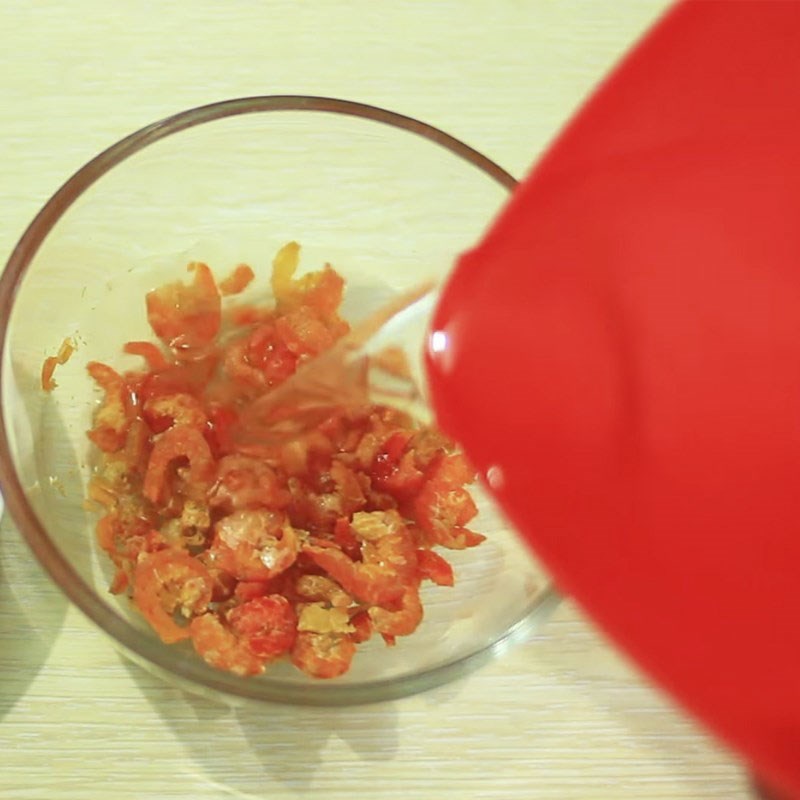
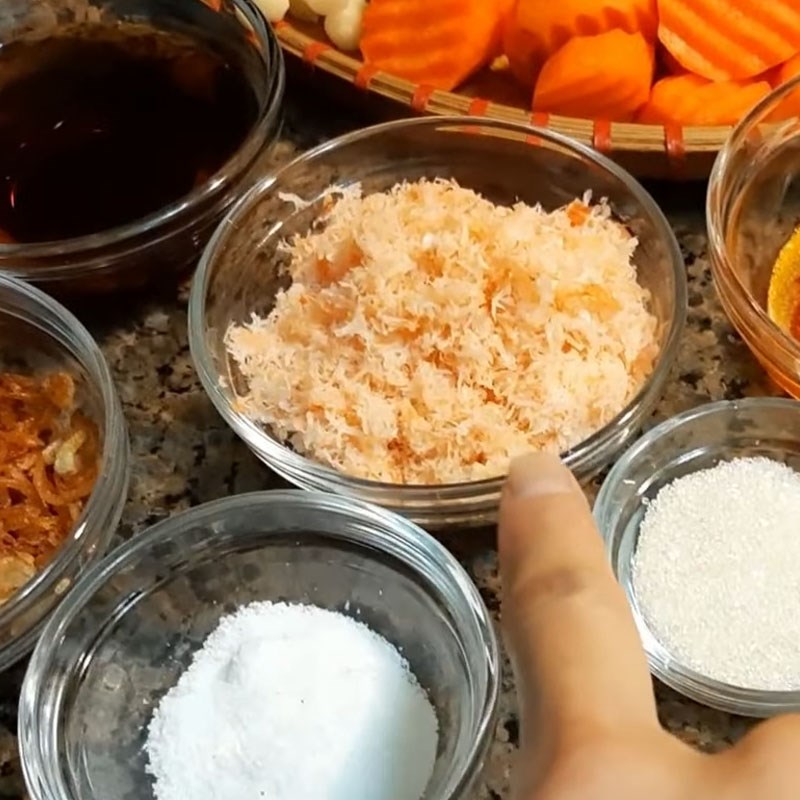
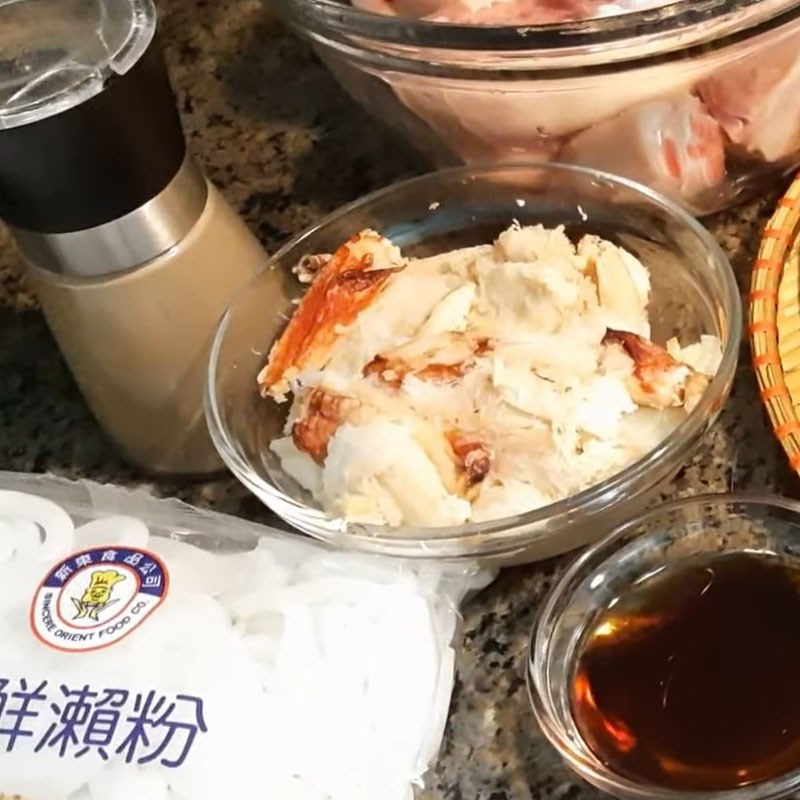
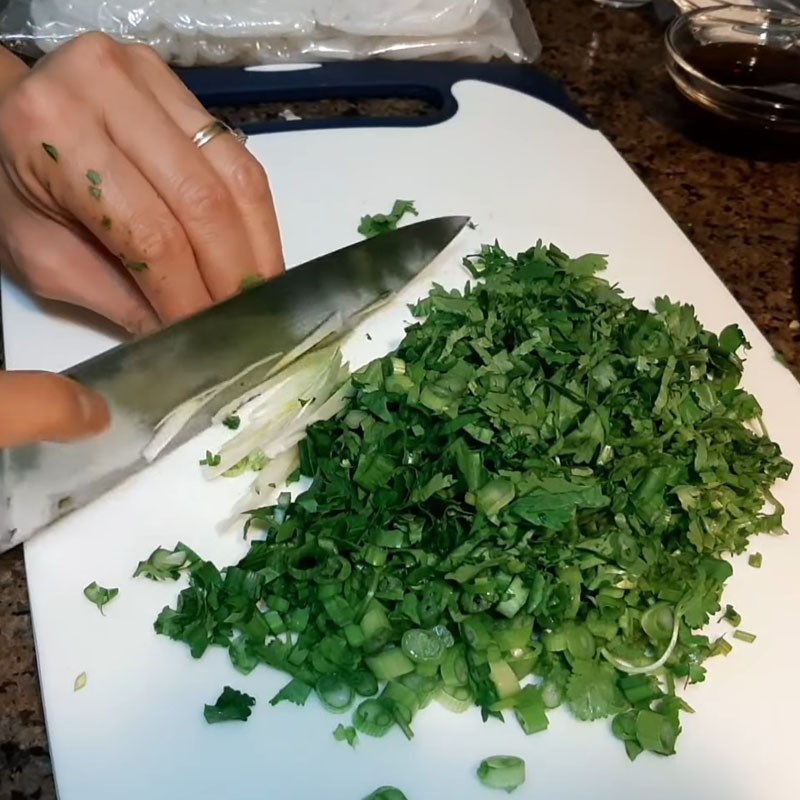
-
Stir-fry shrimp and crab
Put a pan on the stove, add 2 tablespoons of cooking oil and heat it, then add the crushed dried shrimp to the pan, stir evenly over medium heat for about 2 minutes until the dried shrimp is fragrant, then turn off the heat.
Place another pan on the stove, add 2 tablespoons of cooking oil and heat, then add 1 tablespoon of minced shallots and garlic and sauté until fragrant.
Next, add the crab meat, 1 teaspoon of annatto oil, and 1/2 tablespoon of fish sauce, stir-fry over medium heat for about 2 minutes until the crab meat turns a beautiful golden color, then turn off the heat.
Tip:
- Stir-fry the dried shrimp first before adding it to the broth to enhance the aroma of the dish.
- Stir-frying crab with annatto oil helps the crab meat achieve a beautiful golden color.
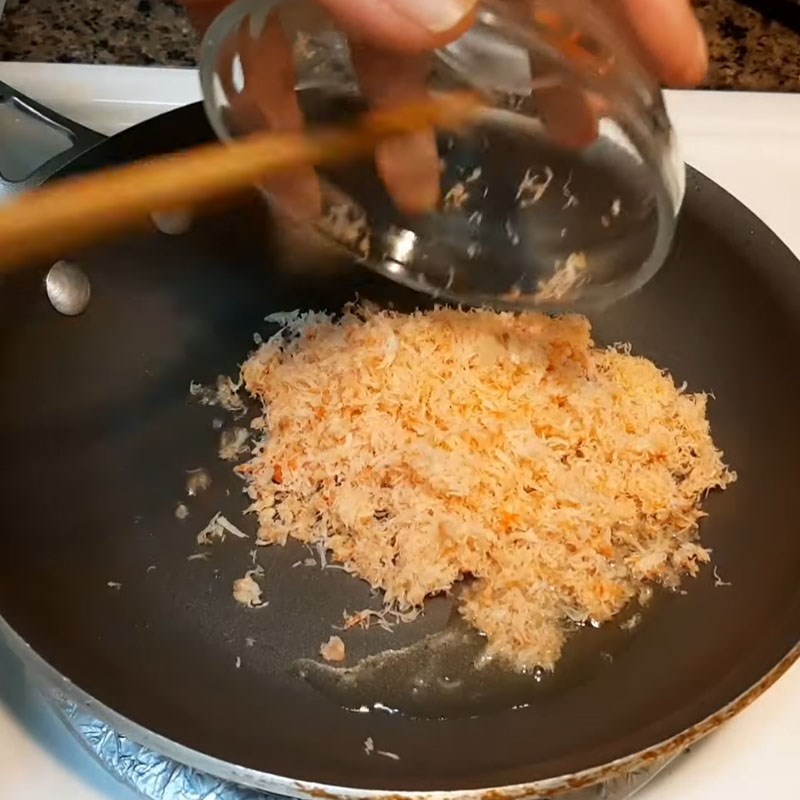
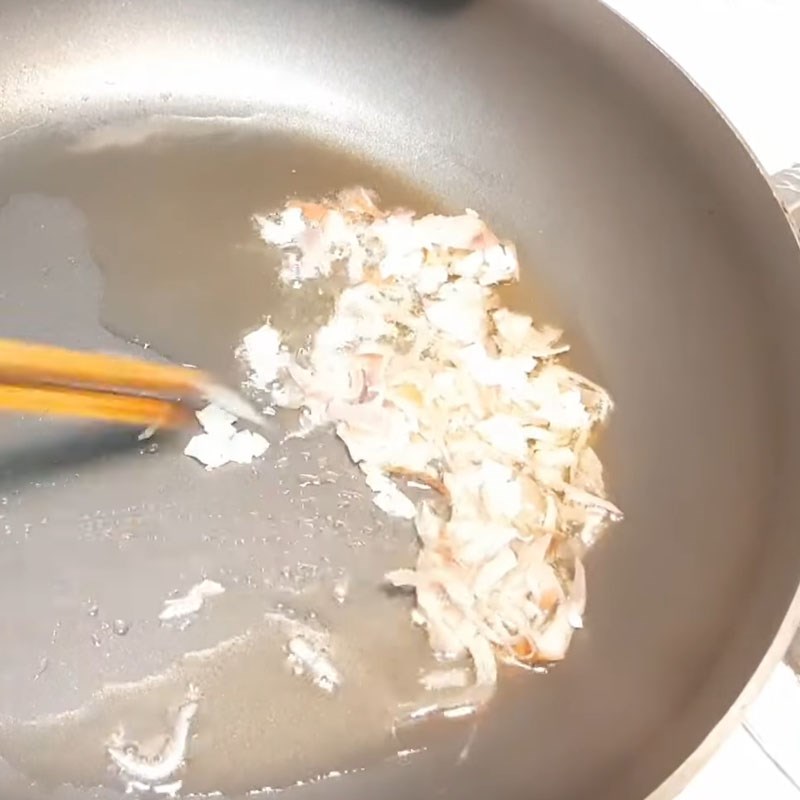

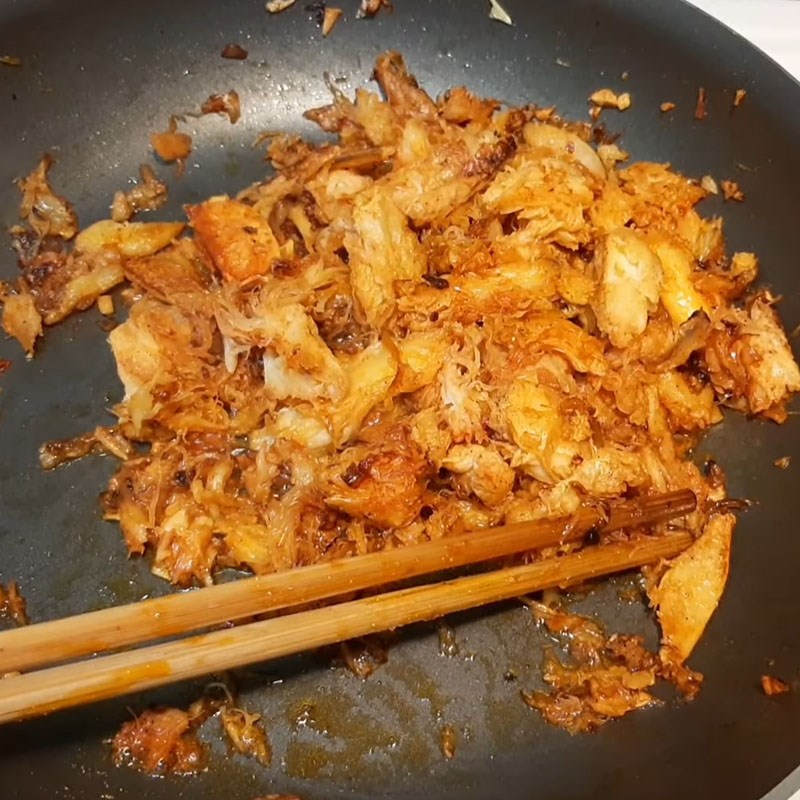
-
Simmer the pork leg
Place a pot on the stove, add 2 liters of bone broth and bring to a boil, then add the pork leg, 2 teaspoons of salt, and 1 teaspoon of seasoning into the pot and cook over medium heat until the broth returns to a boil.
When the broth begins to boil, add 1/2 onion, 3 shallots, all the stir-fried dried shrimp, and carrots into the pot, then reduce the heat, cover, and simmer the pork leg for about 45 minutes to 1 hour until the pork leg is tender.
Tip: During the simmering process, you should regularly skim off the foam to keep the broth clear and visually appealing!
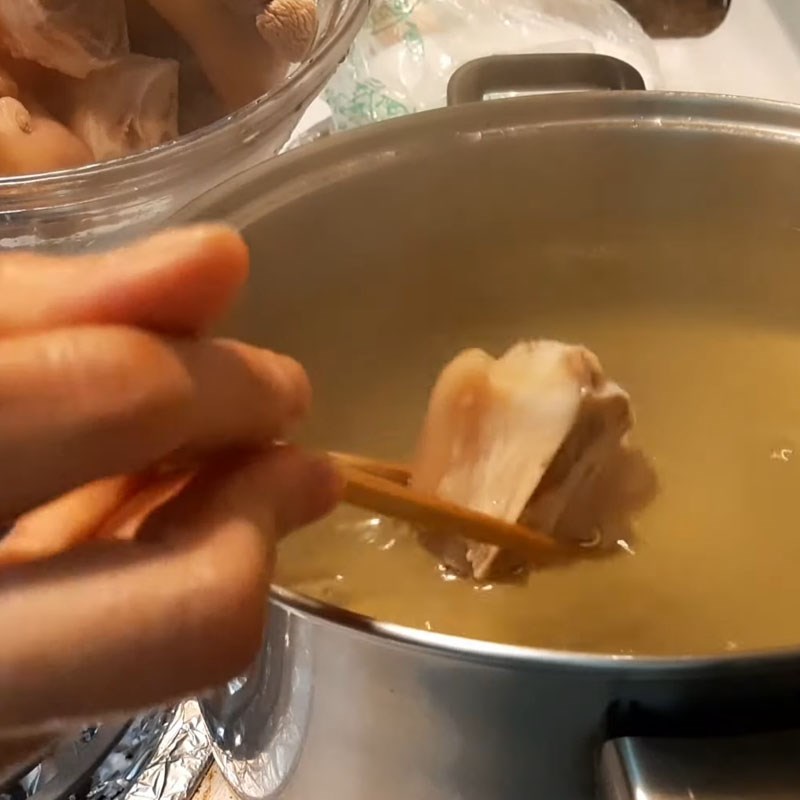
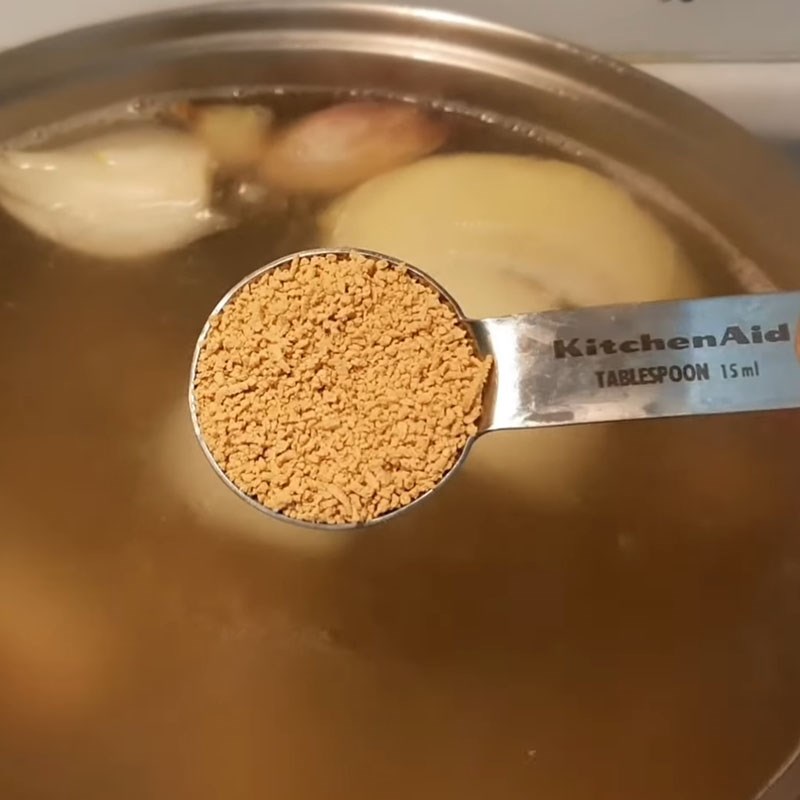
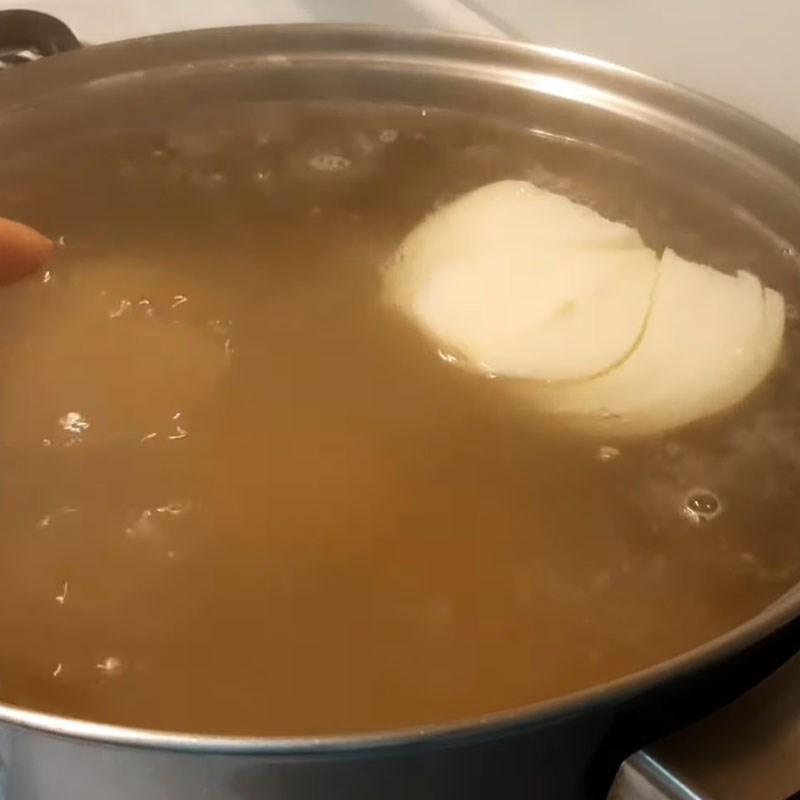
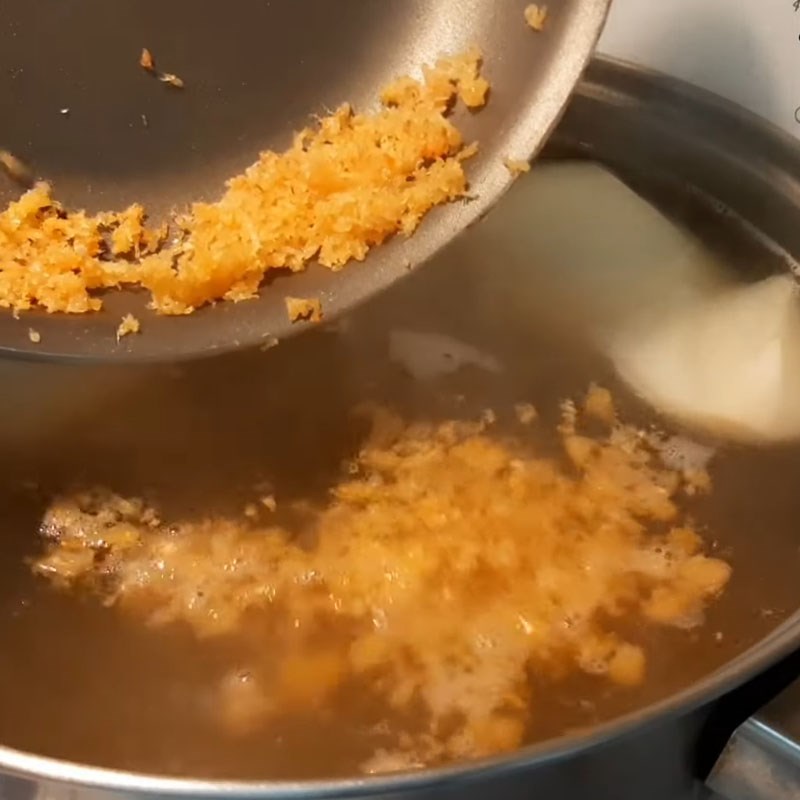
-
Cooking bánh canh
After the pork leg is cooked and tender, use a strainer to remove the onions and shallots, then continue to take the pork leg and place it in a bowl of ice water.
Tip: Soaking the pork leg in ice water helps it become whiter and the skin more chewy and crispy.
Next, add 2 liters of filtered water to the pot and bring to a boil. Add 3 teaspoons of seasoning, 1 tablespoon of sugar, 4 tablespoons of fish sauce, and stir well until the seasonings are completely dissolved.
Then, add the sautéed crab meat and bánh canh to the pot and continue to cook on medium heat until the water boils again and the bánh canh is cooked.
Dissolve 1 tablespoon of tapioca starch in 4 tablespoons of water, then gradually pour it into the pot while stirring until the broth reaches the desired thickness, then taste and adjust the seasoning before turning off the heat.
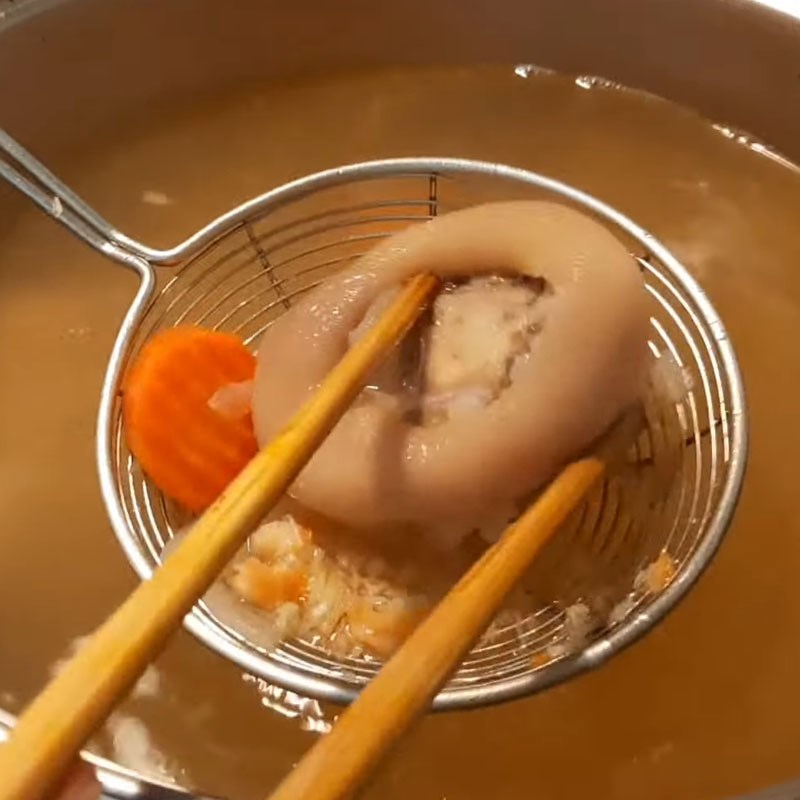
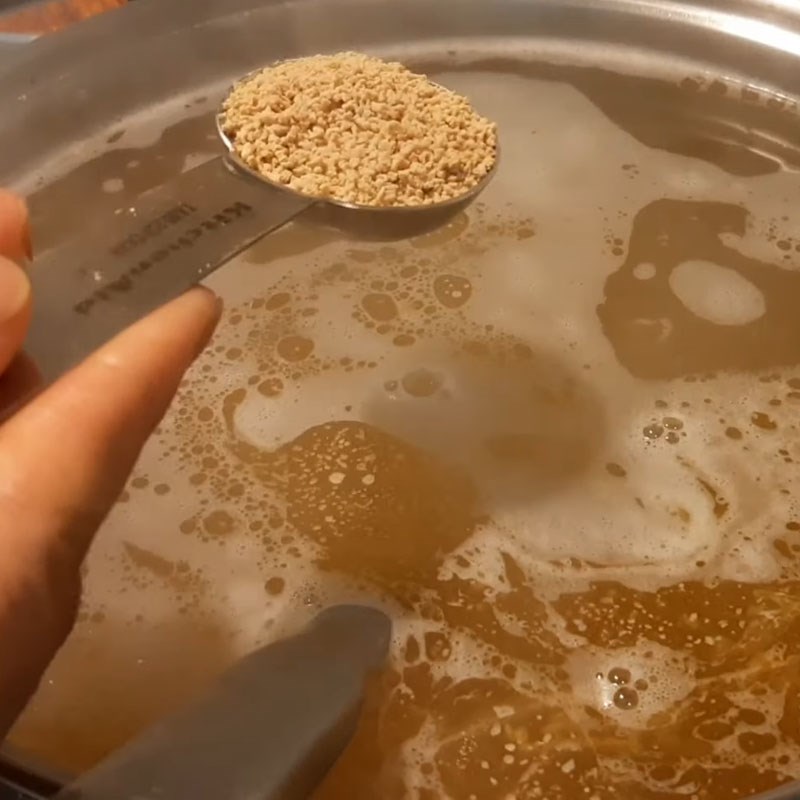
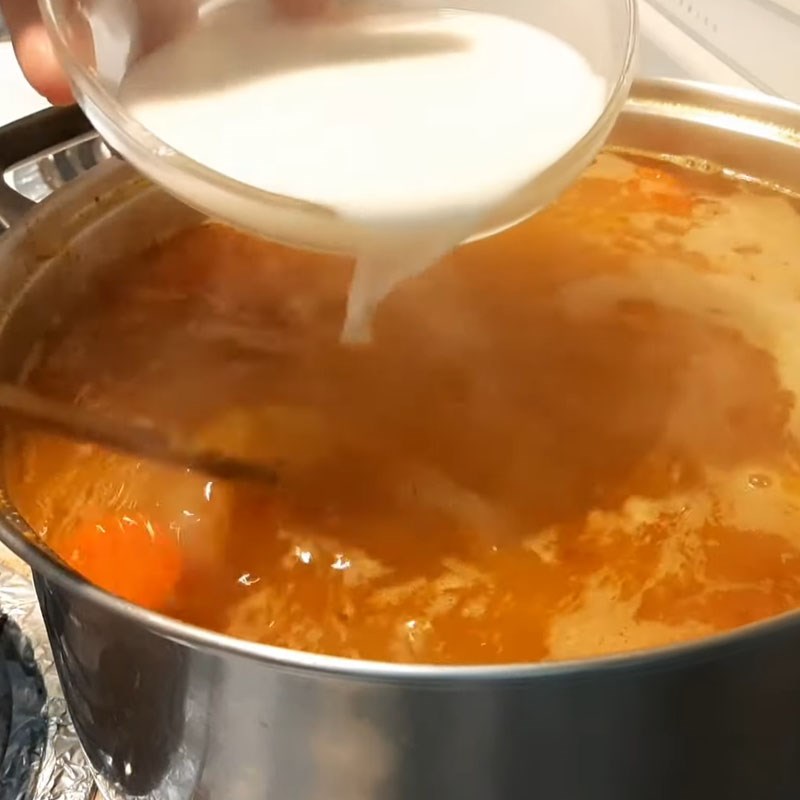
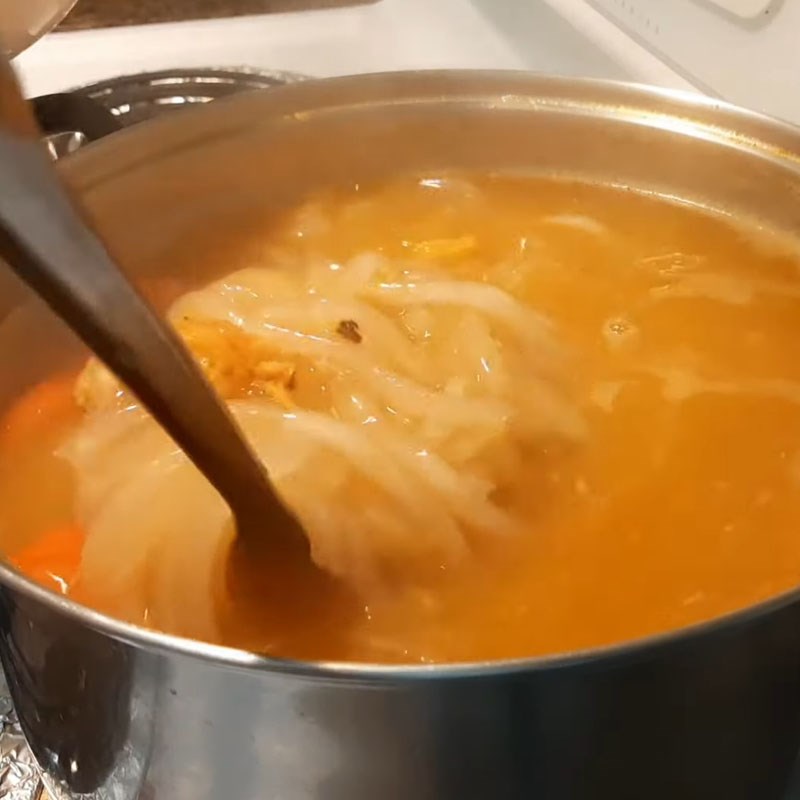
-
Final Product
Scoop the bánh canh into a bowl, sprinkle a little chopped green onion, cilantro, and fried onion on top, and decorate it nicely to finish.
With the sweet and rich broth, chewy pig’s trotter, tender sweet crab meat blending together, crab bánh canh with pig’s trotter is the perfect choice to start a new day full of energy for your family. Get into the kitchen and show off your skills to make this dish right away!

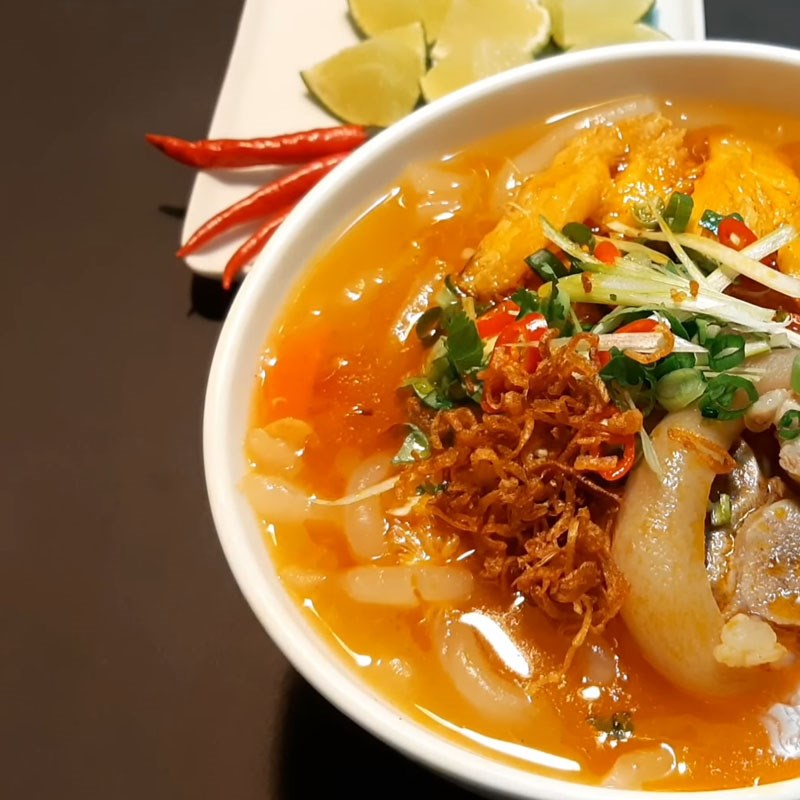
See more:
With just a little time and a few simple steps, you can have a delicious and nutritious bánh canh cua giò heo ready to treat the whole family. We hope that with the recipe shared by TasteVN, you will succeed and have truly delicious meals!
*Refer to the recipe source and images from the YouTube channel Jade Do Canada
